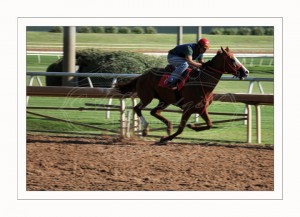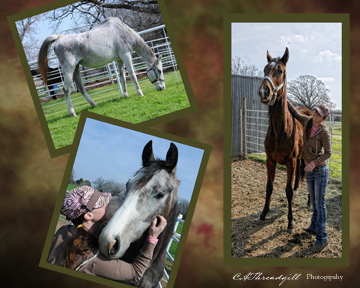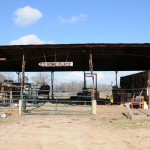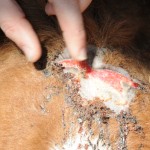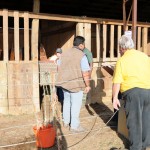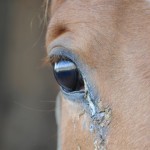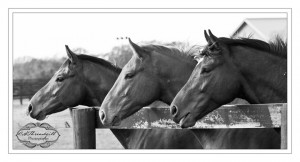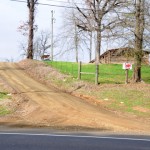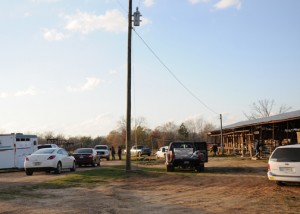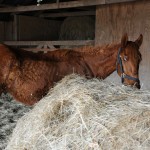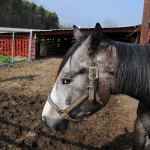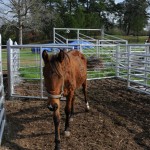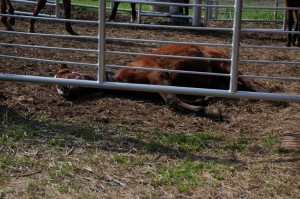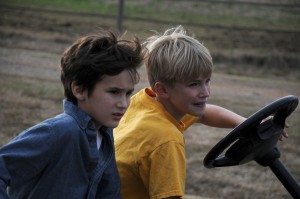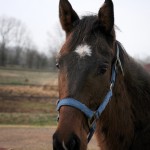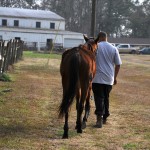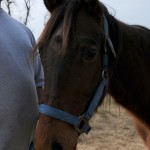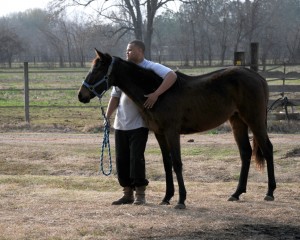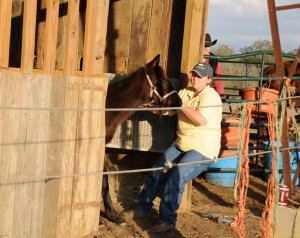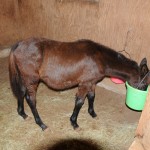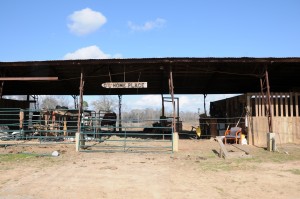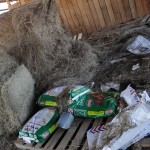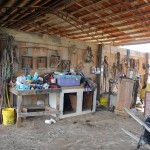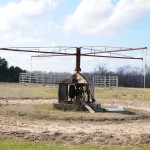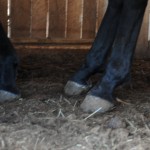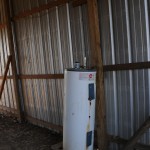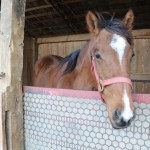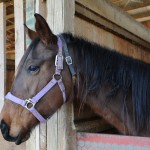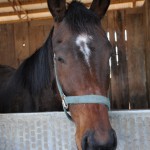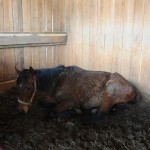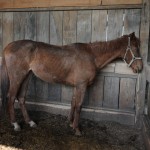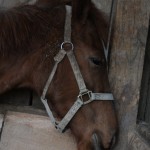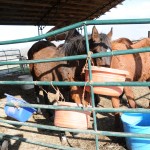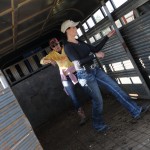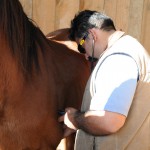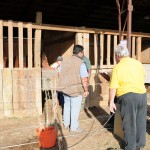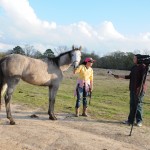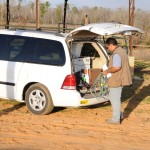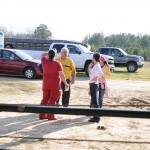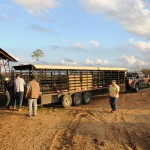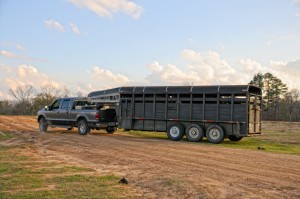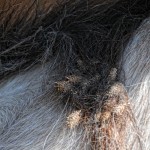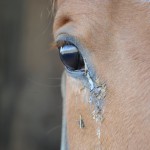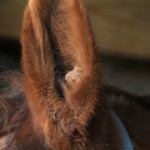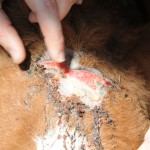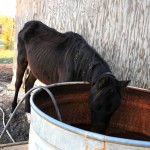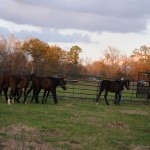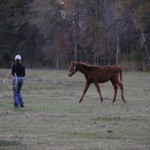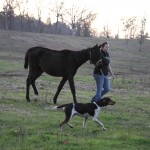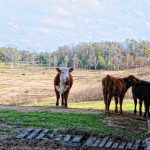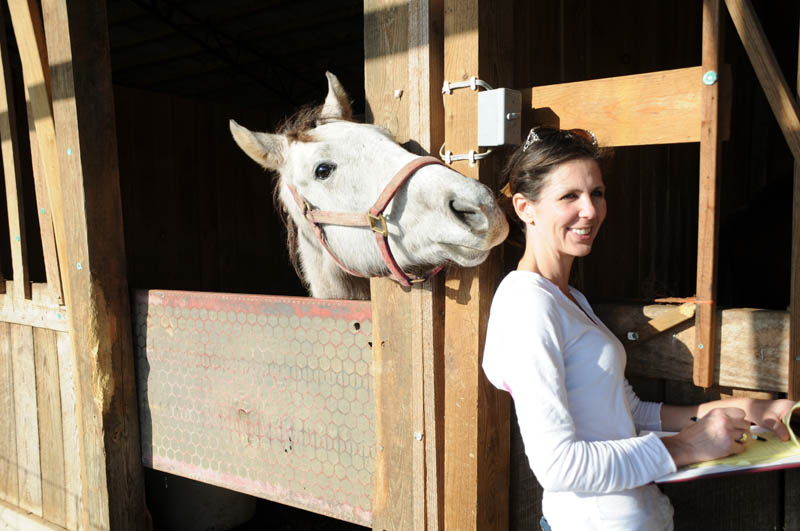RACEHORSE ABUSE AND COVER-UP IN NATCHITOCHES, LA…
For all of you who are following the tragedy in Natchitoches, LA – there are still horses at 1955 Williams Ave, Natchitoches, LA and at this time it appears that they will remain there. It seems like an army of individuals have been working effortlessly trying to save these poor animals to no avail. Calls, e-mails, texts, and twitts have gone out starting with the Animal Control Department all the way up the ladder to the Governor of Louisiana, we have contacted the national news media from ABC to NBC and CNN even the National Enquirer. We have even sent e-mails and twits to Anderson Cooper to name a few.
One point that I would like to make is that not everyone on the LTBA Board was aware of what has been happening at the Ryder Ridge River Farm a year ago. Some, actually, were not made aware of the matter until my original post regarding this matter. If you look at the LTBA Board Members who are on the Louisiana Horse Rescue Association’s Board, those are the ones who knew.
What we have learned is that no one seems to have the authority to go in and seize these animals except the Sheriff’s Department who seems to find it beneficial to support Clay Ryder and to allow horses to die. We have also found out that the DA of Natchitoches, LA lives, per Google .02 miles in other words 23 seconds away from the Ryder property. Is there a good-old-boy cover up going on????
The Natchitoches Times reported on January 26, 2013 that Sheriff Victor Jones, Jr. “has been investigating complaints of animal abuse at Ryder’ River Ridge Horse farm for over a year and have been working with the son of the owner to improve conditions there.” It is further reported that “Jones said there were 150 thoroughbred horses on 60 acres at the farm, an area too small to support that number of horses.” I have received reports from two independent sources that claim the number of horses on this property was closer to 200.
The article goes on to say that after Jones assigned Deputy Rob Walsworth to the case and after the farm was visited by a state veterinarian and representative of the LA Brand Commission “Clay Ryder began working with officials to improve the conditions and began taking some of the original 150 horses to rescue facilities.” As I have stated in previous post we were aware that Clay Ryder had agreed to work with officials and had originally agreed to surrender 20 horses to the LHRA when in fact he only surrendered 8 of the original 20 horses. In an e-mail dated January 19, 2013 Sunny Francois, Executive Director of LHRA stated “…Of the original 20 promised 8 were received; after which point the spring grass was coming up…” So immediately we see that we have over populated acreage, we have an owner who didn’t even follow through with his first promise and a horse rescue that believes the spring grass from over populated acreage will be enough for now between 142 and 192 horses to survive.
The Natchitoches Times further goes on to state “ Walsworth made about 20 visits to the farm during the last year with the last on being Dec. 8. “Some of the horses were down in weight but there was nothing alarming,” Jones said. “And Clay was working with Rob and did everything we asked him to do.” Below are pictures of some of the horses as of January 15, 2013.
Ask yourself and then ask others “is Deputy Walsworth blind, what was the Sheriff’s Department asking Clay Ryder to do and what was he doing”. A horse does not get in this condition in thirty days.
The Natchitoches Times also states that “LA State Police then met with Jones and Walsworth and requested they arrest Ryder. Jones said he told them he would not arrest Ryder because of his past cooperation.” My question to Sheriff Jones is; “WHAT COOPERATION?”
Bottom line according to the Natchitoches Times, Sheriff Jones is giving Ryder “another 30 days to improve the conditions and step up the efforts to get rid of the horses, to which Ryder agreed”. There needs to be an accounting of where the horses have gone or are going. Ryder does not need the opportunity to just move them to a different property.
We know there were approximately 150 to 200 horses on the property in January 2012, per Jones, and that there are about 57 horses still on the property as of January 2013, per Jones. Let recap Ryder’s cooperation:
January 2012 150 – 200 horses on Ryder River Ridge Farm
February 2012 8 horses turned over to LHRA 20 promised
March 2012 0 horses turned over
April 2012 0 horses turned over
May 2012 0 horses turned over
June 2012 0 horses turned over
July 2012 0 horses turned over
August 2012 0 horses turned over
September 2012 0 horses turned over
October 2012 0 horses turned over
November 2012 0 horses turned over
December 2012 0 horses turned over
January 5, 2013 18 horses turned over to LHRA
January 17, 2013 7 horses turned over to LHRA
January 19, 2013 14 horses turned over to LHRA
Well 57 horses plus 47 horses equals 104 horses. What happened to the remaining 46 to 96 horses? Did they die? DID 46 to 96 HORSES DIE DURING THE PAST 11 MONTHS?
The LSU Ag Center Research and Extension has a narrative in which the state in part:
The state’s race horse industry was made up of 1,221 breeders who owned 8,897 mares that produced 7,698 foals that were sold in 2011 for $61.6 million. A total of 90 breeders own 832 stallions that were bred to 10,446 mares, generating income from stud fees of $26.1 million. The total gross farm income generated from race horse production was $117.9 million. In addition, 2,390 race horse owners had 14,329 horses with a gross farm value of $171.9 million. Total gross farm value of the race horse sector was $259.6 million in 2011, not including receipts or fees from racing events or gaming.
To read the entire narrative click here: LSU Ag Center Narrative
Not being a resident of the State of Louisiana I do not understand how a state that prides itself on their thoroughbreds can allow them to die from starvation. We are aware that the Sheriff’s Department, Police Department, Animal Control, Humane Society, District Attorney, Attorney General, Governor and many others are aware of what has been taking place for the past twelve months.
THE SYSTEM IS BROKEN. – 2012 Many, LA 60 horses seized unknown number dead, 2013 Natchitoches, LA 40 to 90 horses missing possibly dead. What will we hear about in 2014.

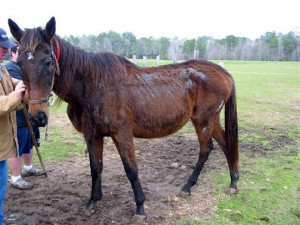
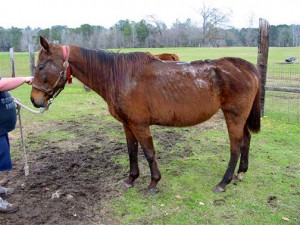
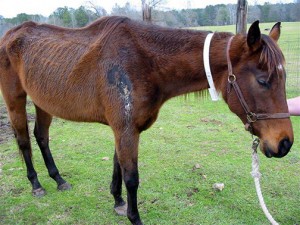
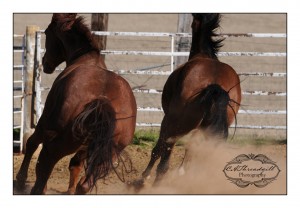
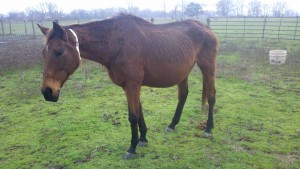
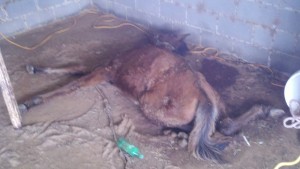
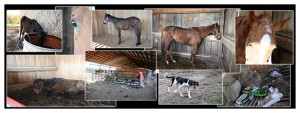

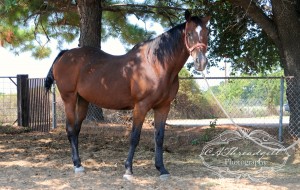
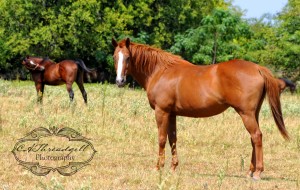
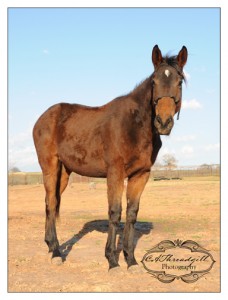 It is hard to write this follow-up because it turned out that this was not the isolated incident I thought it was, but it was the first one where I was on the scene. During the past twelve months I have learned so much about the Race Horse Industry, and yes it is an industry. I have received a number of calls and e-mails regarding other race horses being neglected and found that it is almost impossible for individuals or rescue groups to take action. If the owner doesn’t relinquish the horses voluntarily then there must be such a public outcry before anything gets done. I have received pictures of dead and dying horses, have called police departments, sheriff departments, neighboring farms all the time giving the owner the opportunity to remove evidence of abuse and neglect. There are inspectors and horse racing officials who know about these incidences but the abuse continues.
It is hard to write this follow-up because it turned out that this was not the isolated incident I thought it was, but it was the first one where I was on the scene. During the past twelve months I have learned so much about the Race Horse Industry, and yes it is an industry. I have received a number of calls and e-mails regarding other race horses being neglected and found that it is almost impossible for individuals or rescue groups to take action. If the owner doesn’t relinquish the horses voluntarily then there must be such a public outcry before anything gets done. I have received pictures of dead and dying horses, have called police departments, sheriff departments, neighboring farms all the time giving the owner the opportunity to remove evidence of abuse and neglect. There are inspectors and horse racing officials who know about these incidences but the abuse continues.
